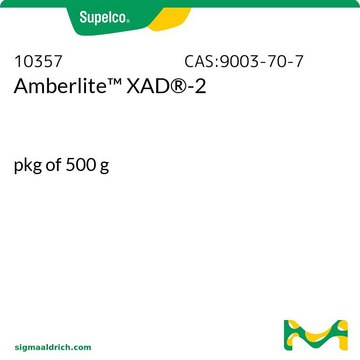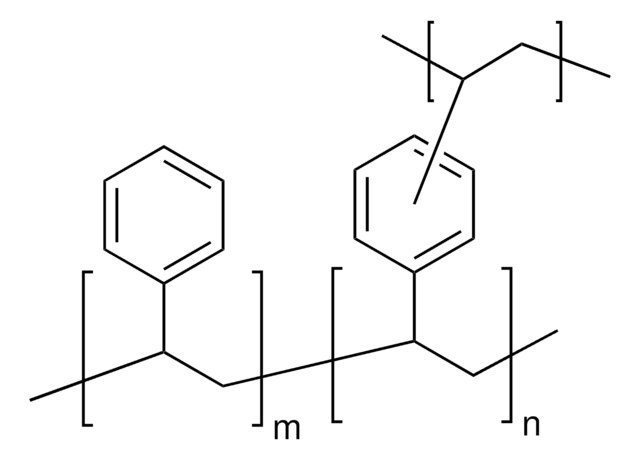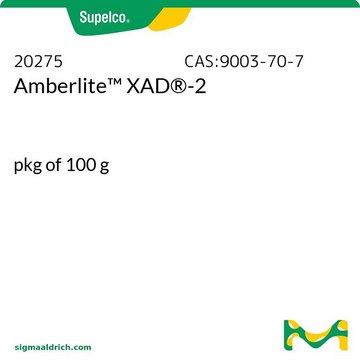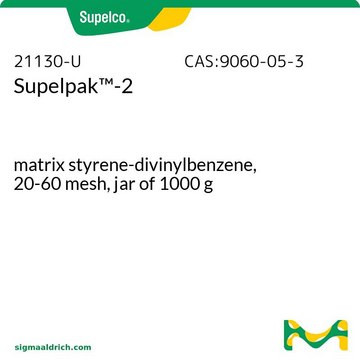14056-U
Supelpak™-2SVM polymeric adsorbent
20-60 mesh, pkg of 500g
Synonym(e):
stopcock (2-way), luer lock, polycarbonate/acetal
About This Item
Empfohlene Produkte
product name
Supelpak™-2SVM, pkg of 500 g
Agentur
suitable for EPA OTM-45
Qualitätsniveau
Form
beads
Verpackung
pkg of 500 g
Methode(n)
LPLC: suitable
thin layer chromatography (TLC): suitable
Oberflächenbereich
~300 m2/g
Matrix
Styrene-Divinyl-benzene
Aktive Matrixgruppe
polymer
Partikelgröße
20-60 mesh
Porengröße
~0.65 mL/g pore volume
90 Å mean pore size
Anwendung(en)
environmental
Trenntechnik
reversed phase
Suchen Sie nach ähnlichen Produkten? Aufrufen Leitfaden zum Produktvergleich
Allgemeine Beschreibung
Anwendung
Rechtliche Hinweise
Lagerklassenschlüssel
11 - Combustible Solids
WGK
WGK 3
Flammpunkt (°F)
Not applicable
Flammpunkt (°C)
Not applicable
Hier finden Sie alle aktuellen Versionen:
Analysenzertifikate (COA)
Die passende Version wird nicht angezeigt?
Wenn Sie eine bestimmte Version benötigen, können Sie anhand der Lot- oder Chargennummer nach einem spezifischen Zertifikat suchen.
Besitzen Sie dieses Produkt bereits?
In der Dokumentenbibliothek finden Sie die Dokumentation zu den Produkten, die Sie kürzlich erworben haben.
Verwandter Inhalt
Low pressure liquid chromatography (LPLC) operates at low pressures, using a pump to drive the mobile phase onto the column.
Die Niederdruck-Flüssigkeitschromatographie (LPLC) ist eine chromatographische Technik, bei der die mobile Phase mit niedrigem Druck durch die Säule (stationäre Phase) gepumpt wird.
Unser Team von Wissenschaftlern verfügt über Erfahrung in allen Forschungsbereichen einschließlich Life Science, Materialwissenschaften, chemischer Synthese, Chromatographie, Analytik und vielen mehr..
Setzen Sie sich mit dem technischen Dienst in Verbindung.








